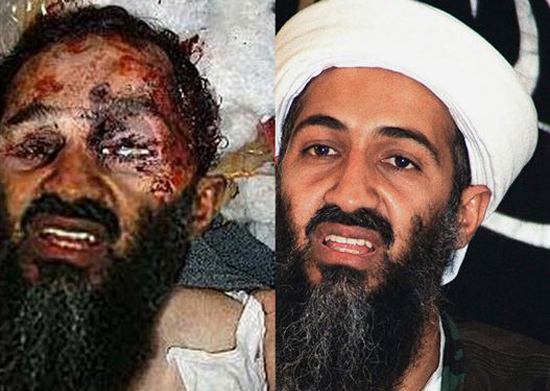
But, as Chris Rickleton files as part the special Global Voices report on the US assassination of Osama bin Laden, in Kyrgyz society, Washington's presence in the country has often been viewed ambiguously. 9/11 conspiracy theory organisations such as Zeitgeist, have won widespread acceptance among the mainstream population. “Truthers" emerge in the form of taxi drivers and night club security personnel, who seize on foreigners, at pains to explain the scientific limitations inherent in pancake theory and the Rockefeller dynasty's sordid role in the attacks.
Apathy and cynicism
It comes as no surprise then, that the reported death of Osama Bin Laden, the popularly assumed mastermind of the attacks themselves, was treated by many Kyrgyz bloggers - and some politicians - with a sense of apathy and even cynicism.
In an article on local citizen media outlet kloop.kg [ru], senior public figures in the country revealed their doubts over the actuality of the shooting, and even Bin Laden's prior existence as a bona fide human being.
Sheradyil Baktygulov, an independent political expert argued [ru] that “Perhaps the death of [Osama Bin Laden] actually took place, but more likely it's a conspiracy.” A member of parliament for the parliamentary faction Ata-Meken, Karganbek Samakov went further, expressing [ru] his opinion that Bin Laden was a “fictional character”.
But amidst the whirl of rumour and conjecture, more serious attempts have been made to place the event within the context of the Central Asian region's ever-deepening human rights morass.
In a post titled “I don't know anything about the death of bin-Laden but”, Kloop blogger Selbi describes [ru] some of the routine violations that have been permitted in the wake of the post-9/11 “anti-terror discourse”:
Many activists around the world fell under the definition of “terrorist” because they wanted change and wanted to speak about it peacefully and in an alternative way, many people fell under this definition because they were not born [in a certain place], because they have such a colour of skin or they don’t belong to such a religion, or simply have the suffix “stan” in their passport.
The blogger adds that worldwide customs and security checks in the age of terror have:
strengthened a hierarchy of admissions - who does and doesn't deserve to go to such and such a country, permitted [processes of] selection and discrimination within the citizen body and controlled access to various resources (economic, political, social, cultural).
'Terror fatigue'
“Terror fatigue” has become prominent in Central Asian societies as ruling elites habitually invoke the “T word” to justify human rights atrocities or drastic failures in governance. Islam Karimov's Uzbekistan, a former US ally in the war in Afghanistan, characterized victims of the Andijan massacre of 2005 as “extremists”. Kyrgyzstan, in turn, has had its own recent “spate” of dubious terror attacks.
In response to an RFER/L article covering these “attacks”, one user of the service, Tim, summed up the prevailing attitude towards the current elite's tendency to talk up the terror threat:
Why does the headline say that “Ties between Islam, Extremism emerge”?
No ties have “emerged” in Kyrgyzstan, and none emerge in you story, except in government press-releases.
The government here has long tried to make this connection, off and on, for their own domestic and international political ends. At the moment it's politically favourable - so the stories go round again, and every violent crime is linked to “Islamic terrorism”.
There has been no “recent spate of explosions” and the “massive bombing” in November was in fact a very small explosion in a drain that injured no-one and damaged nothing more than a stretch of tarmac. Two police got sore ears. And they probably made that up as well.
Back in Washington, DC, however, “Islamic terrorism” had come to life again, ironically, through the death of its chief protagonist, Bin Laden. Kloop.kg President and blogger Bektour Iskender captured [ru] scenes of ecstasy at the White House in the American capital in a photo-post titled “I am just outside the White House where they are celebrating the murder of Bin Laden”.
One of several comments left by visitors to the blog read [ru] as follows:
Of course, it's a plus that they caught Osama. But the fact that he was being hunted for far too long, suggests that until this moment he was needed the Americans. Something in their interests. Now, he's not needed and.. the main thing, though. The [idea of ] ‘celebrating murder'. This is straight from the vocabulary of terrorism. (Egamberdiev Kabulov)
Note: Thanks to an atrocious piece of journalism, readers of the Kyrgyz news agency AkiPress [ru] may have come to the conclusion that there was photographic proof of Osama Bin Laden's death. In fact, the agency had re-posted a photo which originally appeared on an anti-Washington politics blog another world is possible in 2010.
The agency neither cited the source of the photo, nor, more critically, the date the photo was originally posted. Kloop co-founder Rinat Tuhvatshin rails against the agency's amateurism here [ru]. The photo has since been proven as a fake.



